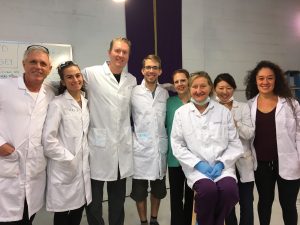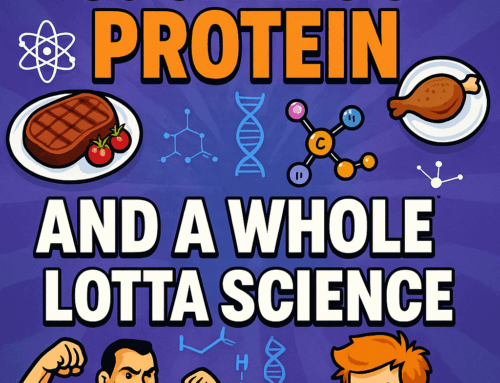
Fresh Tissue Dissection Notes from Anatomy Trains 5 Day Course in AZ, Jan 2018
Note – these are my personal notes / observations. I did my best to attribute them to the correct source whenever possible, and if I missed quoted something, please let me know. These are also from my memory post meditation each AM so they may not be 100% accurate. I left them in the order that they came to me to have an idea of timeline. The course was 5 days of fresh tissue dissection with 5-7 people per body and 8 total cadavers during the course. This is my second time doing it, and it was amazing. Highly recommend everyone do it. Go to the link below for more information. I don’t make a dime off it.
If you have notes/ questions/ additions, hit me up and I will do my best to answer you.
Notes
“As I climb the ladder of knowledge, the horizon of my ignorance expands” -?? (learned from Tom Myers)
-large flat surfaces = adhesion points, get less movement e.g. front part of the shin (tibia), micro current Dolphin work + tissue roll = increased dorsiflexion?
“we are bones floating in a sea of soft tissue “
the Achilles tendon is about 63% water – Scheilp
Fascia is everywhere
Muscle = Fluid compression forces
Fascia lines of force around muscle, radial pressure resistance
The body is always seeking efficiency
TFL/IT band- not in kids lack of lateral stability, over time forms thick tissue due to stress placed on it
TFL contracts to tighten fascial envelope
Lots of skin to fascia adhesions/connections around knee on our cadaver; removal = increased knee ROM, wonder how often restrictions are from substances not muscles/sliding well and skin/ sub Q adipose not sliding well restrict movement? I saw this in the previous dissection work 2 years ago also
Page 2
Inflated the lung with a bag valve make, left lung side did not deflate as easy as the right
One body had a penis pump, very invassive
fat pads under that heel are very thick + tough
wrinkles in fascial/ connective tissue under the knee cap – embryo develops increases knee bent
during a squat, RF (rectus femoris) muscle and hamstrings don’t really “contract” as they are isometrically contracting as origin/ insertions are both moving (hips/knee) and “cancel” each often out. RDL increased hamstring contraction as the knee does not move but hips do move. Leg extension = more quad activation as hip is not moving
Sartorious and RF attachments are close, RF is more inferior
RF has another attachment that goes to the hip socket! Saw this last time too. Wonder if “quad” dominant athletes are increased risk for labral issues? More labrum issuesin females than males as they seem to be more quad dominant in my experience?
Huge differences in SCM’s from one body to the next and even left to right in the same body
Place tongue towards hard palate/ type of mouth = stronger neck contractions via Greg the PT, me – test out with neck extensions in the gym
With overhead arm movement, at the very top of the humerous movement (overhead arm position), the bottom part of scap “tucks into and behind the lat muscle, very stable position, amazing to watch
Page 3
If better movement in the goal, how could anyone think internal anyone think internal cues are better? Movement in so complex just @ the tissue level.
When training– how much are we training facial more than muscles? I think fascial is the bigger component. Some theories on muscle as always isometric and tugging on fascia
Different innervation to muscle = different contraction properties with the same muscle
Can see different sub muscle areas in the deltoid for example, yet we think of it as “1 muscle”
What types /amount of nutrient change fascia? Collagen? Glycine? Others? Timing? Need to look at Dr Keith Baar’s reseach again
If fascia> muscle, nutrition should focus on fascia nutrition? Or since turnover rates are slower, less of an issue as adaptation is longer?
When doing hands on work is that tissue changes and neuro?. From Tom – both tissue changes via Glycosaminoglycans(GAGS) with hands on work. Note to self, check into GAGs
Not a single trigger point found
Did find tissue structure changes though – 1 pec muscle only allowed about 50% of total shoulder flexion, Why? Muscle changes to more of a soft tissue structure? How? Take more energy for muscle to constanly hold tissue tight vs soft tissue = efficient , run gamma nerves /system to hold “muscle tight,” tension then remodels into soft tissue”, Davis’s corollary for soft tissue, truly use it or lose it.
Hands/face/wrist/ankles don’t get enough movement on most days – heavy dense spots of tissue
Page 4
Everything is spatial medicine structural related – Tom Myers
the giraffe sees all – Justin
Lay down with lower leg up to 90° any rotation and lower leg?
Rotation from hamstrings? From Justin – Lay face down, bend lower leg to 90 degrees, medial and lateral rotation of tib / fib? Check hamstring position to do some rotation due to the attachments on the medial and lateral side, check tib/fib rotation
lower leg deep muscles fit perfectly behind the tibia, very dense, tons of fashion.
Attachments in lower leg bone are wrapped in fascia that attaches to the bone itself (periosteum)
hamstring strain – injury to fascia or muscles or both? Everything in that space is wrapped in layers of fascia like saran wrap
quadricep muscles go all the way over to the lateral side and very posterior – much bigger than I thought
intermedialis quadricep muscle is large and stuck entirely to the femur bone
the gastroc insertion is much higher on the femur and the hamstring insertion are farther down than I thought they would be on the lower leg.
Do hands-on work to separate out each hamstring – see above from Justin to also test rotation, me – I also watch the foot position on the test, if it moves they may be using more calf, RX – have them point the calf first (biarticular muscle can only contract across 1 joint at a time), then test hamstring by bring heel to butt.
gastroc and soleus muscles are very stuck to each other in the lower leg in most (me too)
pec minor is much larger on the side with better breathing? Main accessory muscles to help with breathing?
Page 5
Visceral work helps with breathing and breathing also helps with visceral movement? Yes say Tom Myers and gave me a funny look as that it was super obvious (and I agree with him – as I’ve done more visceral work, breathing has been much better, “holds” much longer).
From Tom if LMT – slide your hands gently along the hip to get to the psoas area, if you feel where it moves then you are on the psoas as it can move (muscle of course), no movement in that area with leg movement you are probably near the large intestine
iliopsoas is huge and very deep also becomes part of the diaphragm
adductor magnus be thought of as a hamstring muscle
adductor group is very large and contributes to much of upper leg mass – remember this from last time too.
rectus femoris goes into the hip socket also via a facial attachment – see above about thoughts on labrum issues?
movement of the sack in tissue around the heart – how would you do it? Stand up, open mouth, bring your head back, close your mouth, feel in her tension? Pulls on the tissue sacks a round the heart via fascia, note to self to test this out due to ASD when I was 4.5
our cadaver had tons of adhesions around the heart and especially around the left lung
best nutrition for fascia?
more movement is good
tons of rotational forces everywhere the lines of structure in the body, notes to train more rotational patterns
can use hands to do blunt dissection of the hamstring and quadricep muscles from each other along the fashionable planes
RF muscle does and isometric contraction during squat as other quads have to slide underneath it, saw this last time where they moved about 2-3 inches relative to each other, note to check on clients
Page 6
If “quads are stuck together” pelvis gets more anterior tilted?
C2 area has star shaped “listening” muscles going out in all directions, amazing to see, coordination c eyes proprioception, vestibular system, C2 “off” = a mess?
-the tongue muscle is huge + very deep, connected to upper ,palate, too narrow =tongue issues? better tongue function=better jaw/cranial?
-everything inside the organ area is asymmetrical – hat tip to PRI
-liver is huge! “sits back”,very dense, heavy organ
-no trigger points seen yet
-no 10 lbs of protein in any large intestines
-to watch / help eviscerate (eg. take all the organs out) was crazy to see +do; very rare opportunity +deeply grateful, only a handful of people on the planet have ever done it
-buccinators jaw muscles – need to R+D them more
-ribs do not move apart when breathing the entire chest moves
-internal rib muscles do not help with breathing they are for movement like a watch spring winding conducting w forces. -Tom Myers
page 7
Everyone is using their diaphragm (although efficiency is different on photo essay)
-diaphragm is huge +very thin
-TVA is super thin
-what are you “stretching” c static stretching? still think its dumb
-internal cues are dumb too, esp if movement is the goal. That one thing / muscle is the only thing doing it? Not a chance
-pec major insertion is much lower on ribs than I thought
-scap is a tissue a true sesismoid bone-completely wrapped.
-psoas appears to connect to L5 DISKS.
-pelvic floor is a hammock of tissue.
-sciatic nerve in upper leg is huge +is 2 different nerve tracks next to each other same encasement
-many had lots of crunchy calcium deposits in vessels.
note from Tom Myers – joints operate on alternating skins and rotation C-spine for example is able to hinge and rotate, the knee primarily as a constraint, tips/fib joints is more rotation
be sure to look at the pelvic floor from the bottom also especially obturator internists muscle
from Tom Myers – the rib cage is more of a basket and not as much of the cage, think of the body as having either glue or weave in order to hold various structures together from a design standpoint
pterygoid muscle in the face and jaw becomes the temporalis muscle layer virtually the same muscle, was not able to find a connection between the eye muscles and pajama souls per se, but this was done on the last day of dissection and no skin was present at that time,
temporalis muscle does run very close to the eye socket line
long head of the bicep goes into the bicipital groove and into the shoulder of the labrum, attaches to it, very similar to the rectus femoris in the lower leg having an attachment that goes into the labrum in the hip
“As I climb the ladder of knowledge, the horizon of my ignorance expands” -?? (learned from Tom Myers)




Leave A Comment